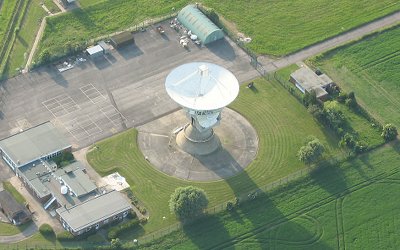Dr Chris Walden
chris.walden@ncas.ac.uk
01235 445601
Applies only to user-configurable instruments
Calendar

Chilbolton Atmospheric Observatory (CAO)
Chilbolton Atmospheric Observatory is hosted by the Science and Technology Facilities Council (STFC) in rural Hampshire in the South of England. It provides national capability for the remote sensing of clouds, rainfall and aerosols, and is particularly well suited as a site for hosting field campaigns involving visiting instruments.
Several Chilbolton instruments are available for on-demand use via AMOF.
The 3 GHz Chilbolton Advanced Meteorological Radar (CAMRa) is mounted on a 25-metre, fully steerable antenna, and is able to probe clouds and storms with unparalleled sensitivity and resolution. In addition, a zenith-pointing polarimetric 94 GHz cloud radar is available for microphysical studies of cloud. This instrument may also be mounted in a cradle on the 25-metre antenna to allow synchronised scanning with CAMRa. The Observatory also serves as home base for the deployable X-band radar (NXPOL-2), also available through AMOF.
Capability at the site was enhanced in 2022, with the incorporation of a Raymetrics Raman lidar, providing state-of-the art capability for aerosol profiling.
- The presence (since January 2016) of a Defra air quality monitoring supersite at the observatory site (providing rural background measurements as part of national and transboundary networks) offers the research community further excellent opportunities for intercomparison campaigns and instrument evaluation.
Latitude: 51º08’40.1″ N
Longitude: 1º26’13.2″ W
Altitude: 84m above mean sea level
Health and Safety policy is in place for the Chilbolton site. Users visiting the site will be made aware of requirements, and in particular the installation of guest instrumentation will require a full risk assessment.
